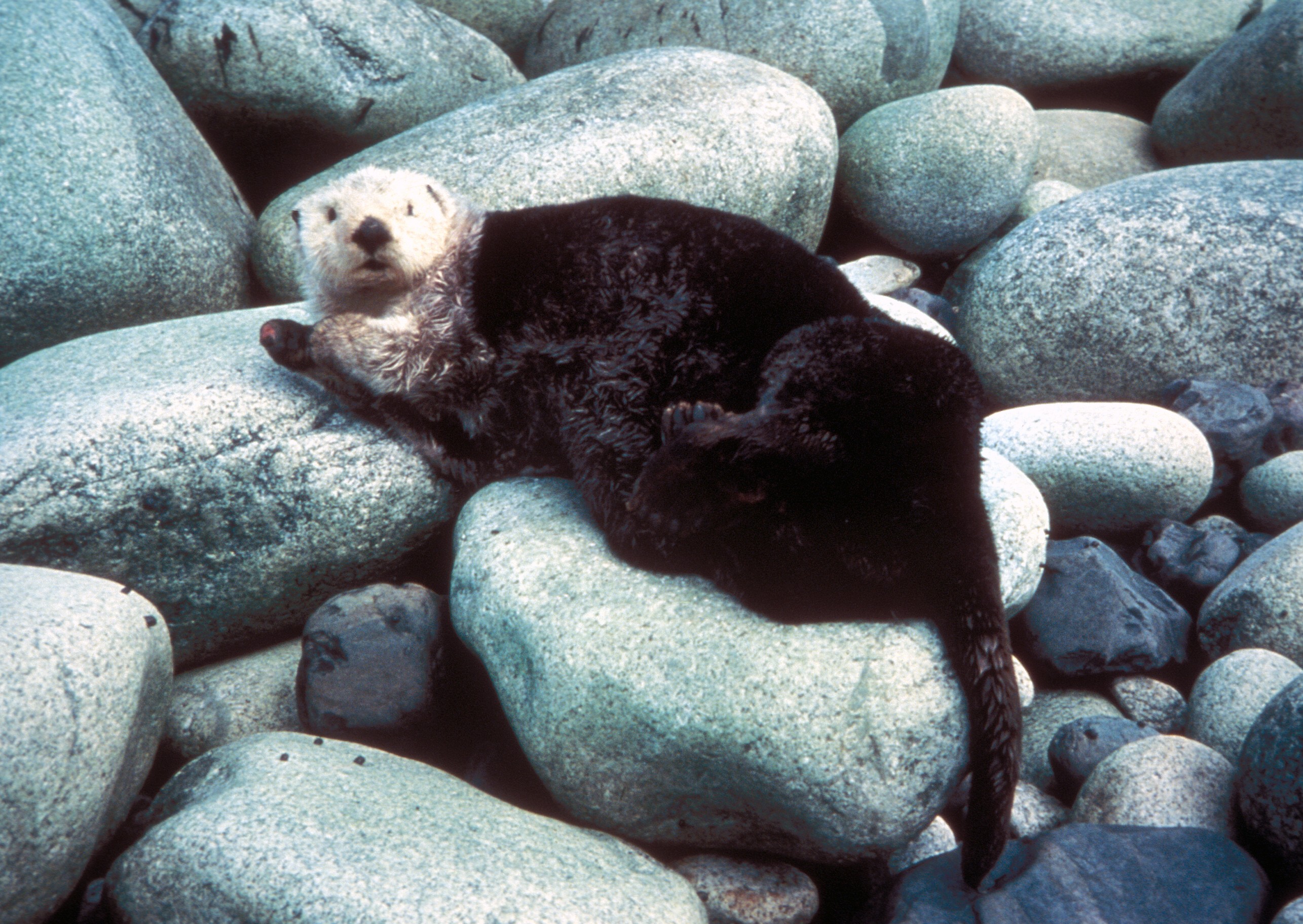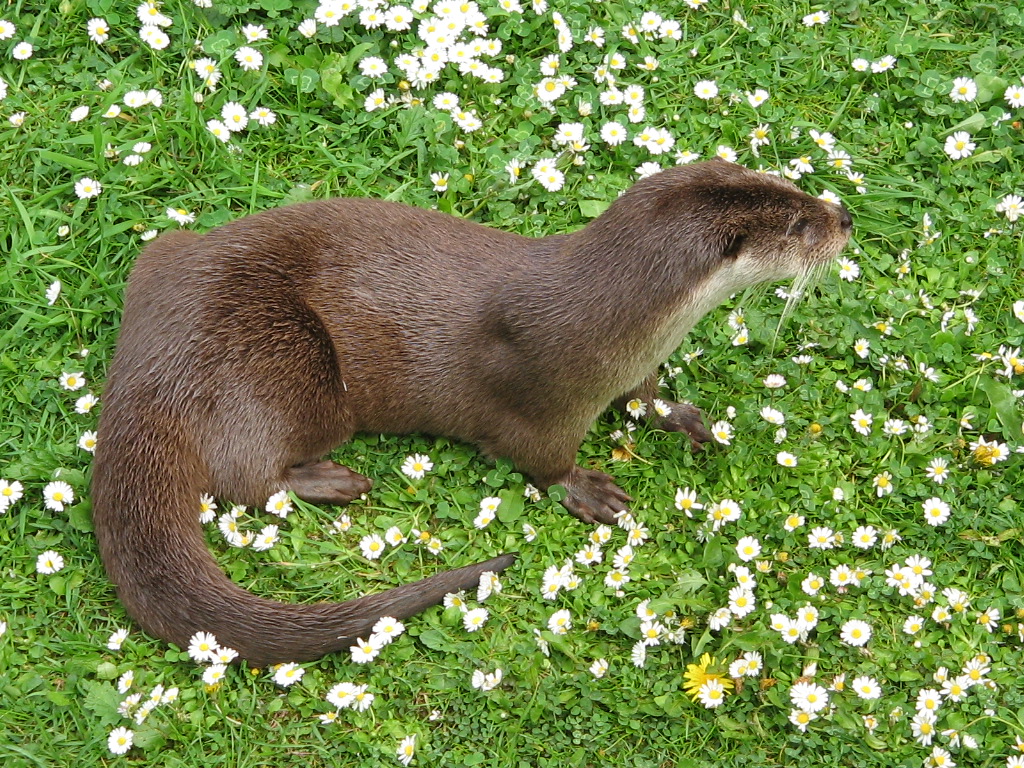|
Enhydra Macrodonta
''Enhydra macrodonta'', the large-toothed sea otter, is an extinct mustelid known from the middle Pleistocene in California. Description The large-toothed sea otter is a close relative of the living sea otter The sea otter (''Enhydra lutris'') is a marine mammal native to the coasts of the northern and eastern Pacific Ocean, North Pacific Ocean. Adult sea otters typically weigh between , making them the heaviest members of .... As its name implies, it is distinguishable from the modern sea otter by its larger, more robust teeth. Fossils of the large-toothed sea otter are dated to between 700 and 500 ka. References Otters Prehistoric mustelids Pleistocene carnivorans Prehistoric mammals of North America Pleistocene mammals of North America Mustelidae Pleistocene extinctions {{Mustelidae-stub ... [...More Info...] [...Related Items...] OR: [Wikipedia] [Google] [Baidu] |
Pleistocene
The Pleistocene ( ; referred to colloquially as the ''ice age, Ice Age'') is the geological epoch (geology), epoch that lasted from to 11,700 years ago, spanning the Earth's most recent period of repeated glaciations. Before a change was finally confirmed in 2009 by the International Union of Geological Sciences, the cutoff of the Pleistocene and the preceding Pliocene was regarded as being 1.806 million years Before Present (BP). Publications from earlier years may use either definition of the period. The end of the Pleistocene corresponds with the end of the last glacial period and also with the end of the Paleolithic age used in archaeology. The name is a combination of Ancient Greek () 'most' and (; Latinized as ) 'new'. The aridification and cooling trends of the preceding Neogene were continued in the Pleistocene. The climate was strongly variable depending on the glacial cycle, oscillating between cold Glacial period, glacial periods and warmer Interglacial, int ... [...More Info...] [...Related Items...] OR: [Wikipedia] [Google] [Baidu] |
California
California () is a U.S. state, state in the Western United States that lies on the West Coast of the United States, Pacific Coast. It borders Oregon to the north, Nevada and Arizona to the east, and shares Mexico–United States border, an international border with the Mexico, Mexican state of Baja California to the south. With almost 40million residents across an area of , it is the List of states and territories of the United States by population, largest state by population and List of U.S. states and territories by area, third-largest by area. Prior to European colonization of the Americas, European colonization, California was one of the most culturally and linguistically diverse areas in pre-Columbian North America. European exploration in the 16th and 17th centuries led to the colonization by the Spanish Empire. The area became a part of Mexico in 1821, following Mexican War of Independence, its successful war for independence, but Mexican Cession, was ceded to the U ... [...More Info...] [...Related Items...] OR: [Wikipedia] [Google] [Baidu] |
Sea Otter
The sea otter (''Enhydra lutris'') is a marine mammal native to the coasts of the northern and eastern Pacific Ocean, North Pacific Ocean. Adult sea otters typically weigh between , making them the heaviest members of the Mustelidae, weasel family, but among the smallest marine mammals. Unlike most marine mammals, the sea otter's primary form of insulation is an exceptionally thick coat of fur, the densest in the animal kingdom. Although it can walk on land, the sea otter is capable of living exclusively in the ocean. The sea otter inhabits nearshore environments, where it dives to the sea floor to Foraging, forage. It preys mostly on marine Invertebrate, invertebrates such as sea urchins, various mollusks and crustaceans, and some species of fish. Its foraging and eating habits are noteworthy in several respects. Its Tool use by sea otters, use of rocks to dislodge prey and to open shells makes it one of the few mammal species to use tools. In most of ... [...More Info...] [...Related Items...] OR: [Wikipedia] [Google] [Baidu] |
Otters
Otters are carnivorous mammals in the Rank (zoology), subfamily Lutrinae. The 13 extant otter species are all semiaquatic, aquatic animal, aquatic, or Marine ecology, marine. Lutrinae is a branch of the Mustelidae Family (biology), family, which includes weasels, badgers, mink, and wolverines, among other animals. Otters' habitats include dens known as holts or couches, with their social structure described by terms such as dogs or boars for males, bitches or sows for females, and pups or cubs for offspring. Groups of otters can be referred to as a bevy, family, lodge, romp, or raft when in water, indicating their social and playful characteristics. Otters are known for their distinct feces, termed spraints, which can vary in smell from freshly mown hay to putrefied fish. Otters exhibit a varied life cycle with a gestation period of about 60–86 days, and offspring typically stay with their family for a year. They can live up to 16 years, with their diet mainly consisting of ... [...More Info...] [...Related Items...] OR: [Wikipedia] [Google] [Baidu] |
Prehistoric Mustelids
Prehistory, also called pre-literary history, is the period of human history between the first known use of stone tools by hominins million years ago and the beginning of recorded history with the invention of writing systems. The use of symbols, marks, and images appears very early among humans, but the earliest known writing systems appeared years ago. It took thousands of years for writing systems to be widely adopted, with writing having spread to almost all cultures by the 19th century. The end of prehistory therefore came at different times in different places, and the term is less often used in discussing societies where prehistory ended relatively recently. It is based on an old conception of history that without written records there could be no history. The most common conception today is that history is based on evidence, however the concept of prehistory hasn't been completely discarded. In the early Bronze Age, Sumer in Mesopotamia, the Indus Valley Civilis ... [...More Info...] [...Related Items...] OR: [Wikipedia] [Google] [Baidu] |
Pleistocene Carnivorans
The Pleistocene ( ; referred to colloquially as the ''Ice Age'') is the geological epoch that lasted from to 11,700 years ago, spanning the Earth's most recent period of repeated glaciations. Before a change was finally confirmed in 2009 by the International Union of Geological Sciences, the cutoff of the Pleistocene and the preceding Pliocene was regarded as being 1.806 million years Before Present (BP). Publications from earlier years may use either definition of the period. The end of the Pleistocene corresponds with the end of the last glacial period and also with the end of the Paleolithic age used in archaeology. The name is a combination of Ancient Greek () 'most' and (; Latinized as ) 'new'. The aridification and cooling trends of the preceding Neogene were continued in the Pleistocene. The climate was strongly variable depending on the glacial cycle, oscillating between cold glacial periods and warmer interglacials, with the sea levels being up to lower than ... [...More Info...] [...Related Items...] OR: [Wikipedia] [Google] [Baidu] |
Prehistoric Mammals Of North America
Prehistory, also called pre-literary history, is the period of human history between the first known use of stone tools by hominins million years ago and the beginning of recorded history with the invention of writing systems. The use of symbols, marks, and images appears very early among humans, but the earliest known writing systems appeared years ago. It took thousands of years for writing systems to be widely adopted, with writing having spread to almost all cultures by the 19th century. The end of prehistory therefore came at different times in different places, and the term is less often used in discussing societies where prehistory ended relatively recently. It is based on an old conception of history that without written records there could be no history. The most common conception today is that history is based on evidence, however the concept of prehistory hasn't been completely discarded. In the early Bronze Age, Sumer in Mesopotamia, the Indus Valley Civilis ... [...More Info...] [...Related Items...] OR: [Wikipedia] [Google] [Baidu] |
Pleistocene Mammals Of North America
The Pleistocene ( ; referred to colloquially as the ''Ice Age'') is the geological epoch that lasted from to 11,700 years ago, spanning the Earth's most recent period of repeated glaciations. Before a change was finally confirmed in 2009 by the International Union of Geological Sciences, the cutoff of the Pleistocene and the preceding Pliocene was regarded as being 1.806 million years Before Present (BP). Publications from earlier years may use either definition of the period. The end of the Pleistocene corresponds with the end of the last glacial period and also with the end of the Paleolithic age used in archaeology. The name is a combination of Ancient Greek () 'most' and (; Latinized as ) 'new'. The aridification and cooling trends of the preceding Neogene were continued in the Pleistocene. The climate was strongly variable depending on the glacial cycle, oscillating between cold glacial periods and warmer interglacials, with the sea levels being up to lower than ... [...More Info...] [...Related Items...] OR: [Wikipedia] [Google] [Baidu] |
Mustelidae
The Mustelidae (; from Latin , weasel) are a diverse family of carnivora, carnivoran mammals, including weasels, badgers, otters, polecats, martens, grisons, and wolverines. Otherwise known as mustelids (), they form the largest family in the suborder Caniformia of the order (biology), order Carnivora with about 66 to 70 species in nine subfamilies. Variety Mustelids vary greatly in size and behaviour. The smaller variants of the least weasel can be under in length, while the giant otter of Amazon rainforest, Amazonian South America can measure up to and sea otters can exceed in weight. Wolverines can crush bones as thick as the femur of a moose to get at the Bone marrow, marrow, and have been seen attempting to drive bears away from their kills. The sea otter uses rocks to break open shellfish to eat. Martens are largely arboreal, while European badgers dig extensive tunnel networks, called setts. Only one mustelid has been domesticated; the ferret. Tayra are also kept ... [...More Info...] [...Related Items...] OR: [Wikipedia] [Google] [Baidu] |





